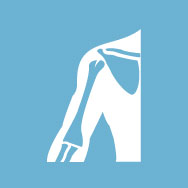COVID-19 Update – Yes we are open. Our rooms and processes have been modified to ensure your safety. Please click here to learn more.

There are three bones that make up the shoulder – the clavicle (collarbone), the scapula (shoulder blade) and the proximal humerus (arm bone). Certain fractures of these bones are best managed with surgery. Various ligaments and tendons can also be damaged as well as the broken bone, and these may need to be repaired at the same time.
Fractures of the clavicle can usually be managed with a sling and some physiotherapy exercises. However, some fractures may require clavicle fixation surgery if the broken bone ends are no longer aligned properly.
Clavicle fractures are generally repaired using a metal plate to hold the broken bone ends back together. If the ligaments that support the nearby acromioclavicular joint have been injured then acromioclavicular stabilisation may need to be performed at the same time.
After clavicle fracture fixation, you will be able to go home either the same day as the procedure or the next morning. You will be in a sling, and you will receive a physiotherapist referral to help with your rehabilitation. Generally speaking, you can move your shoulder as soon as you can comfortably do so, but you should not participate in contact sports or high-risk activities (e.g. bicycle racing) until healing is complete.
The scapula is a large bone with several parts to it. Most fractures are repaired with a combination of metal plates and screws. In most cases, this is done using a cut directly over the fracture. Occasionally an arthroscopy will be performed at the same time to help visualise some fractures better, such as glenoid fractures and certain acromial fractures.
If the ligaments that help secure the ball and socket joint of the AC joint have been damaged, then a shoulder stabilisation or an AC stabilisation may need to be performed at the same time.
After scapula fixation surgery, you will generally be able to go home the day after your procedure. Your arm will be in a sling and you will be referred to a physiotherapist to help guide your rehabilitation. Because of the large number of muscles and ligaments that attach to the scapula, a large amount of force goes through the bone when the arm is moved. Too much force can damage the fixation and may prevent the bone from healing.
You can generally begin moving your shoulder as much as it is comfortable to do so after surgery. However, you will not be able to resume forceful or high-risk activities such as weights, throwing, bicycle racing or contact sport until the fracture has healed.
Fractures of the humerus are usually repaired using a combination of plates and screws. If the rotator cuff tendons have also been damaged, then a rotator cuff repair using bone anchors and sutures may also be required.
The operation is usually done through a cut over the fracture. In most cases, this cut is along the front of the shoulder, although it can also be on the side of the shoulder. Shoulder arthroscopy may also be performed in some situations to help see the fracture and any torn rotator cuff tendons better.
After proximal humerus surgery, you will be able to go home once your shoulder is comfortable enough. If your surgery was very complex then this may be a day or two after your operation. You will be in a sling and you will be referred to a physiotherapist.
You can generally move your shoulder as soon as it is comfortable to do so after the operation. If a rotator cuff repair was required then there some additional restrictions on how much you can move your arm for several weeks after surgery.
Proximal humerus fractures usually make the shoulder very stiff (loss of movement). This stiffness can last for several months. Even once the fracture has healed this loss of motion will often be the main delay in being able to resume recreational activity and sport, particularly overhead movements.
For more information on shoulder fracture fixation, we recommend contacting our surgeons for an initial consultation.